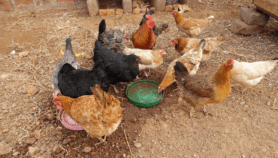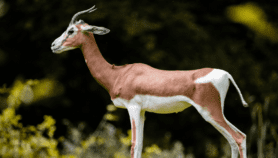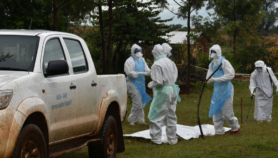Send to a friend
The details you provide on this page will not be used to send unsolicited email, and will not be sold to a 3rd party. See privacy policy.
SARS caught the world by surprise in 2002. Scientists knew little about the virus or where it came from. Now, researchers have found that horseshoe bats harbour the virus, eventually transmitting it to humans (see SARS-like virus found in wild bats in Hong Kong).
In this article, Andrew Dobson of Princeton University in the United States describes how SARS and other deadly viruses such as Nipah and Hendra — and potentially Ebola too — get from bats to humans.
When bats feed, they spit out partially digested fruit or insects. Animals, such as civets (in the case of SARS) or gorillas (in Ebola), could eat these contaminated remnants and later spread the virus to humans.
Dobson says that tackling this problem demands a greater understanding of bat ecology and immunology — not just bat control. He says increasing transmission of infectious organisms from bats to humans, could be due to human encroachment into bat habitat.
For instance, when the trees that bats feed in are used to provide shade for livestock, it is more likely that contaminated fruits and insects will find their way to humans.
Dobson says the scientists who made the link between horseshoe bats and SARS have developed a new discipline: conservation medicine. This brings together the health and ecological sciences, so that neither is considered in isolation. And that is, says Dobson, an idea whose time has very definitely come.













